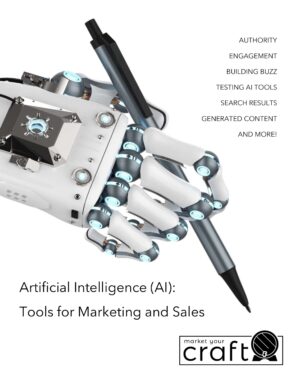Happy New Year! Hope you had a lot of business this Holiday season, despite articles from Drizly, the Brewers Association, Wine Business and others reporting otherwise. Friends and partners in the industry all remain fairly optimistic that in 2024:
- Flavored spirits and Ready-to-Drinks (RTDs) will be strong
- New wine styles/varietals at lower price points will be hot
- Light Lagers and Pilsners brewed true-to-style will be the bar-call of choice
- Non-alcoholic options will continue to expand across all categories
 Those same peers are a little more critical of craft beverage and the others for not making significant strides forward in Marketing Strategy last year. What do we mean by that? We’re not talking about the number of posts and followers. Or the events you sponsored. Or even your new website redesign. Those are all fine tactics. We’re talking more about the long-term strategy to help your business stand out in the crowded home market and beyond.
Those same peers are a little more critical of craft beverage and the others for not making significant strides forward in Marketing Strategy last year. What do we mean by that? We’re not talking about the number of posts and followers. Or the events you sponsored. Or even your new website redesign. Those are all fine tactics. We’re talking more about the long-term strategy to help your business stand out in the crowded home market and beyond.
Take your typical craft beverage producer: if you were to ask the Founder or Owner to describe their Marketing Plan for 2024, would they have an answer?
You might argue that’s not a fair question – they may have Managers responsible for those types of things. And they need to worry about those issues critical to operating the business. So, let’s rephrase the question to something more basic:
“What makes your tasting room different?”
You may get answers like the quality of the liquid is unmatched. Or the wait staff is so friendly. Or the food menu is innovative. Or the calendar of live events is jam-packed. There’s often a sense of pride in the place we work, so there are plenty of ways to respond to the question.
But we asked what makes you different. Not the same as everyone else.
 We have a new client we’re guiding through our Brand Vibe methodology starting this week (our workshop series on developing your brand story). In practice – and in the spirit of starting fresh for New Year’s – we decided to take the team at Market Your Craft through the same set of exercises to test our brand story was still relevant. Perhaps not surprisingly, we realized our business has changed in the past year. And the pathway for onboarding new clients is far more streamlined. Which means the story we’re telling ourselves and others no longer answers the question, “what makes you different?”
We have a new client we’re guiding through our Brand Vibe methodology starting this week (our workshop series on developing your brand story). In practice – and in the spirit of starting fresh for New Year’s – we decided to take the team at Market Your Craft through the same set of exercises to test our brand story was still relevant. Perhaps not surprisingly, we realized our business has changed in the past year. And the pathway for onboarding new clients is far more streamlined. Which means the story we’re telling ourselves and others no longer answers the question, “what makes you different?”
Here’s a peak behind the curtain, Scott, so you may similarly ask and answer for yourself what makes your craft beverage business different.

| Origin Story Small-to-mid-sized breweries in Northern California didn’t have the teams, tools and budgets needed to compete regionally. We wanted to share shortcuts and best practices to help level the playing field. |
| Vision Statement To eliminate “sameness” from the craft beverage industry, guiding producers to build standout brands. |
| Why Choose Market Your Craft Start with Problems: craft beer and wine are declining (existential threat); small-to-mid-sized producers don’t always have the tools and experience to market their liquid successfully. Embrace the Underdog Status: Market Your Craft is small but mighty; can deliver solutions quickly and often more affordably than full-time staff; don’t need all the layers of a bigger agency. Refine an Experience: clients deal directly with all members of the Market Your Craft team; we provide a shortcut to success with very little onboarding based on industry experience; we deliver high performance at 100% remote. |
| Customer Primary: mid-sized craft beverage producers in need of Fractional Marketing Leadership or mission-critical project management. Secondary or Entry: small-to-mid-sized craft beverage producers looking for Marketing strategy, competitive audits and tactical blueprints. Notes: neither of these audiences are necessarily aware of Market Your Craft, and customers will be based in North America only. |
| Define the Path Most clients engage Market Your Craft using the Brand Vibe methodology. This should be the focus of the website. For those with available resources, that work informs an annual Marketing Plan which is then executed internally. Where resource gaps are identified, we offer a retainer or project-based relationship. This should be the focus of speaking and panel discussions. Finally, where executive-level needs exist, we provide Fractional Marketing Leadership and team management. This is more word-of-mouth and networking. |
| Competitors Sameness: craft beverage producers content with doing nothing. Shared In-House Resources: believing you can achieve game-changing outcomes from someone stretched in many directions, or too junior. Dedicated In-House Resources: may be overwhelmed with priorities; too steeped in or protective of historical brand to disrupt; or lack experience to deliver. Freelancers: may offer graphical/creative expertise (which is important), but not the breadth/depth of strategy and multi-disciplinary experience. Agencies: can throw limitless human resources at a project, often at a higher, unmanageable cost. Other Consultants: some notable consultants are making good headway in the space with clearly-defined value propositions and price points. |
| How They Attract Customers A variety of tactics including pitch decks, speaking engagements, sponsorships, exhibits, partnerships, one-stop shopping, entering award competitions, hiring capabilities in-house, retainer relationships and clear pricing structures. |
| How Customers View Competitors One-Stop Shop: start with one project, expand outward. Branding Priority: freelancers and agencies are getting disproportionate attention for visual marketing (packaging designs, refresh work). Clear Value Proposition: easy to understand what they offer. Lack of Marketing Priority: sameness – product should sell itself. In-House Resources: we should be able to do this ourselves. Sales Focus: back into Marketing once Distributors and Retailers are on-board. |
| Brand Positioning: thoughtful resources to help craft beverage producers level-up their Marketing efforts; the shortest distance to high-performance beverage storytelling. Benefits: predictability and control of my Marketing destiny. Promises: confidence we’re maximizing every opportunity to engage new and existing drinkers. Differentiation: Marketing and Production experience in beer, wine, whiskey and non-alcoholic beverages; focus on storytelling fundamentals first. Relevance: craft is facing an existential threat; it’s faster and more affordable to hire Market Your Craft. Voice: credentialed and authoritative, but approachable. |
| Storytelling What Type of Business: advisors, guides, consultancy, fractional leadership, partner. Descriptive Action: solve, guide, shortcut, lead, support, supplement, reduce, enhance, excite. Expectation: best practices, fast, communication, customer service, tools, experiences, shortcuts, high-performance, focus, priority, storytelling, confidence, predictable. Customer: DIY craft producer facing growth challenges from local, regional and national competition. Brand Story: “we believe selling beverages should be exciting. And a well-told story is key to unlocking Sales for your brand. Market Your Craft helps small-to-mid-sized producers quickly adapt to the changing Marketing landscape with storytelling.” |
Very different from our prior brand story: “proven tools for small-to-mid-sized beverage producers. Empower your team to drive traffic, build engagement and capture new sales.” See the full story on the About Us page of marketyourcraft.com.
So, what did we do with our shiny new brand story? What started as preparation for our new client engagement turned into an all-hands effort to update our marketing and promotional materials, beginning with the website at marketyourcraft.com.
- Add the brand story within one scroll on the homepage. This lets new visitors know they’re in the right spot, and aids in search engine indexing.
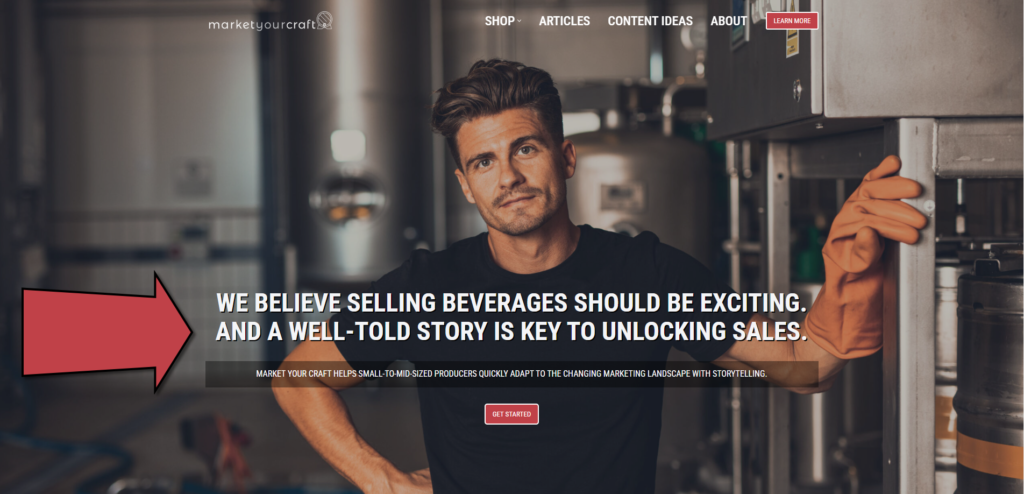
- Promote the Brand Vibe methodology. Most clients start a relationship with an audit of their brand story, so we cleared the pathway to engage with us.
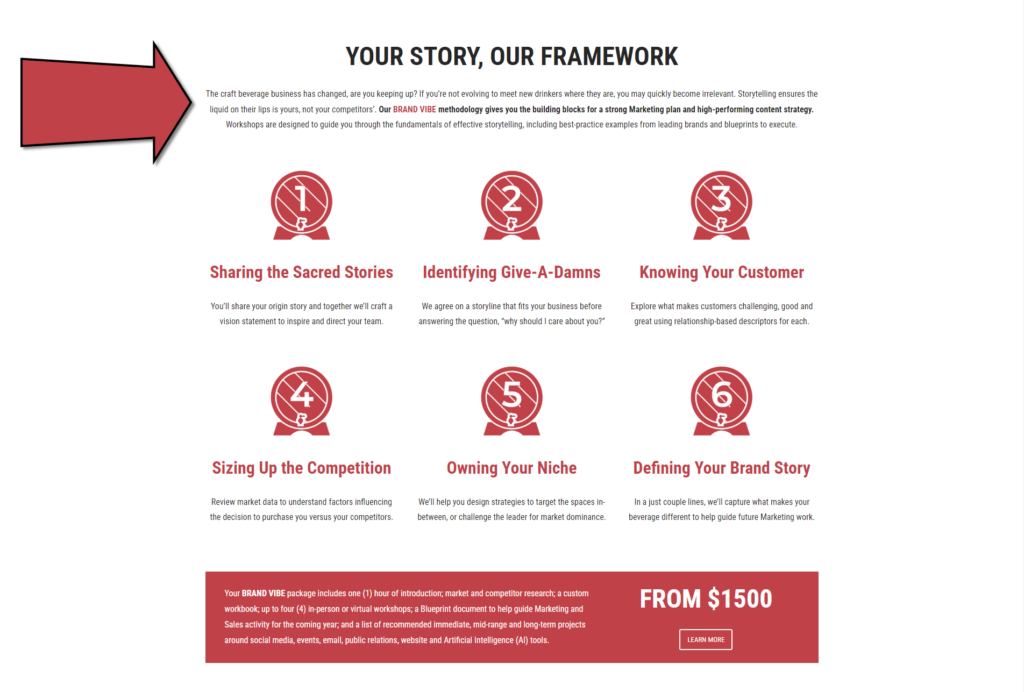
- Offer a selection of DIY resources for those with the internal resources to execute once the brand story is defined.
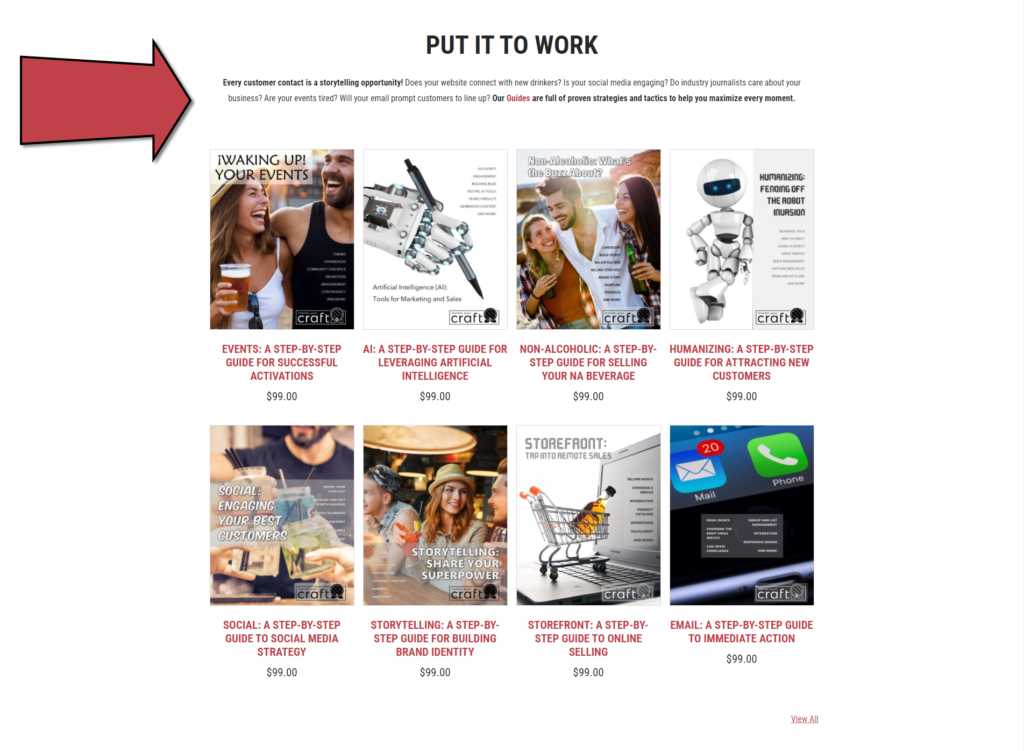
- Create a lower-level About Us page to flesh out our own brand story, with a call-to-action to learn more.
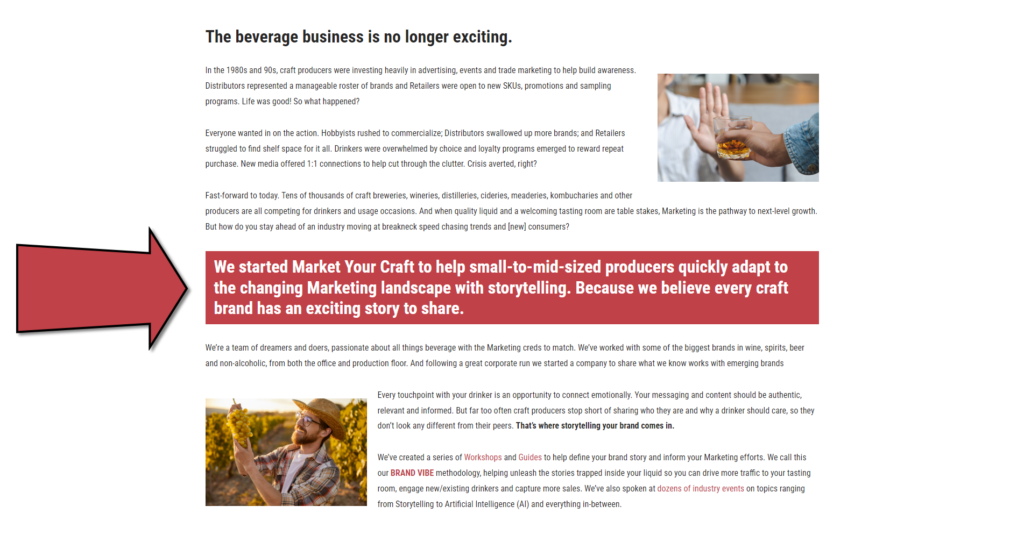
Market Your Craft is no different from your business in this way: we want to stand out from our competitors, attract new customers and grow sales. We encourage every craft beverage producer to go through a similar exercise to make sure the story you’re telling yourself is still the one that lands with today’s drinker. And if it’s changed, use it as a filter for your Marketing Plan to make sure your strategies and tactics all align for greatest effect.
Don’t have a Marketing Plan?
Market Your Craft can help!
Provide your team with clarity on what makes your tasting room different! Your BRAND VIBE package includes one (1) hour of introduction; market and competitor research; a custom workbook; up to four (4) in-person or virtual workshops; and a Blueprint document to help guide Marketing and Sales activity for the coming year. Best of all, team members are empowered to help tell your story through their work, from Accounting to Operations and everyone in-between. Packages from $1500.
MailChimp archive:
https://mailchi.mp/abc87bd59e04/240109_marketingplan?e=bd76eedb35
Download:
https://app.box.com/s/p9ly2e552lc3idr3zkjnlc9vdtr4u8iz


